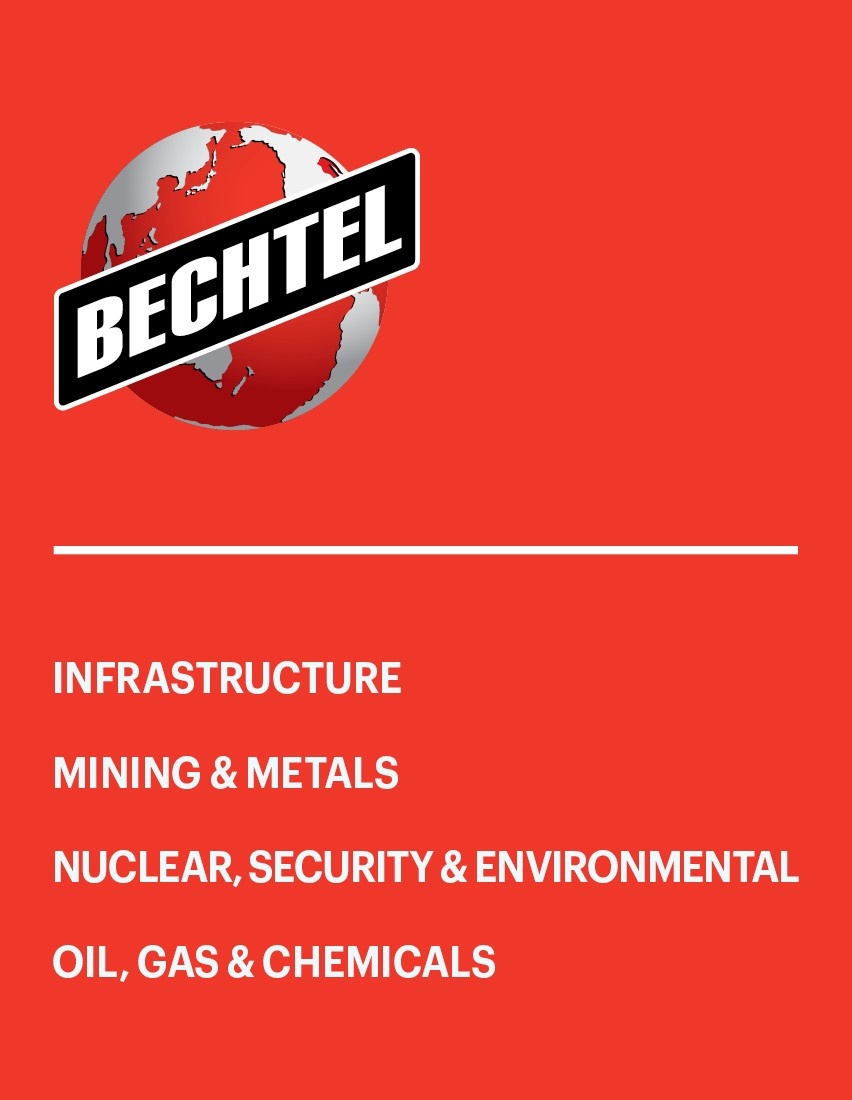Digging Out: How Concepts Of Minecraft And A Silly Name Are Transforming A Serious Business
By: Fred deSousa and Colin McIntyre

Consider this scenario: When planning a large power plant project, designers find that two large hills – some 8 million cubic meters of soil and hard rock – will literally need to be dug out and moved, truckload by truckload, to create the flat space necessary for the plant’s buildings and support facilities.
With that much material to move, it becomes critically important to create a tool to help understand what could be moved when, where mounds of dirt and fill could be temporarily stored, and when movements need to happen to minimize interference with construction, installation of underground utilities, and the plant’s foundation.
Add to that, a desire in the local community to minimize noise, preserve views, and keep a natural-looking landscape.
A digger is born
With this scenario in mind, “Diggy McDigsalot” was born. A product of Bechtel Innovate, a six-step internal process and funding that allows employee ideas to mature from concept to deployment, Diggy was submitted to the fund by Colin McIntyre, construction automation manager at Bechtel.
“Companies very rarely model for dirt,” McIntryre said. “It’s a hole in the picture. It’s helpful to know where the construction holes are going to be and when, or when things are going to be back-filled so trucks can get through. It’s about managing piles: temporary piles, and staging piles. Digging and storing.”
Diggy McDigsalot, also known as the 4D Modeling of Earthworks, uses tools and processes to establish a 4D model of subsurface materials and temporary construction components. The 4D advances the 3D model by adding in the dimension of transformation over time. By adding this technology, modelers can visualize the planning, movement, and storage of truckloads by the thousands of subsurface materials. It allows planners to see what the construction site footprint will look like at any point in time during construction or watch how the site evolves with a video export. Essentially, it is a real-world version of the popular game Minecraft.
Life-size Minecraft
If you’re unfamiliar with Minecraft, it is known as a sandbox game. This means the primary function of the game is to create and modify your environment. In Minecraft, your entire virtual world is created from blocks, each representing a different material—soil, rock, sand, wood, etc.
The 4D Modeling of Earthworks functions in a similar manner by measuring subsurface materials into quantifiable blocks. Each block is assigned a number and characterized: sandy, rocky, etc.
Zeeshan Ghanchi, a civil structural engineer for Bechtel, describes it as “an animation showing where soil is currently, where it wants to go, when it’s going to go there, and how it’s going to go there.”
The model factors in each working part of construction and excavation—down to every cubic foot of soil if necessary—to create a visual representation of the project from start to finish.
“You can play it out in a video to show what it looks like over time. You also can see labor and equipment curves over time,” says McIntyre. By using this technology, planners can adjust the schedule for inclement weather, delayed shipments of construction materials, or any factor affecting the project to allow a day-by-day digital progression to unfold.
Bechtel is taking full advantage of this technology to maximize efficiency and execute an organized construction site. “The timing of the excavation is critical,” says David Ramirez, a senior civil structural designer for Bechtel. “It definitely helps to visualize what’s next.”
What does this mean for the industry?
If construction sites can visualize the progress of excavation from beginning to end, including real-time adjustments for unforeseen obstacles, the project will be able to optimize execution and quickly and efficiently modify work plans based on changing site conditions.
“It’s hard without something to look at, to understand how much is going to move where,” McIntyre said. Now that visualization technologies are here, this is no longer a problem.
Partners, stakeholders, and customers can feel more confident in the anticipated cost and schedule for any construction site using this technology. With 4D Modeling of Earthworks, execution planning is enhanced.
And it started with an idea three years ago that the Bechtel Innovate committee decided was worth pursuing.
“To see the company, from the top down, commit to this— it sends a signal. We are embracing innovation. We want it to be part of our culture. Any employee can submit an idea and see it through,” says McIntyre. “For me, it’s incredibly rewarding. I like to push the envelope. Find new ways, pivot, and try new things.”

